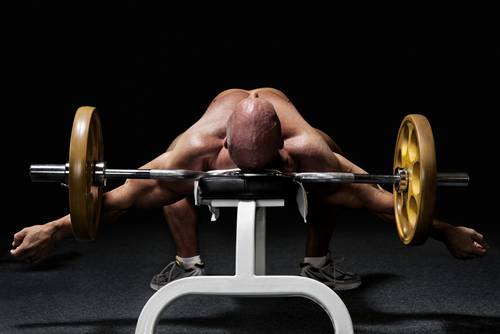When it comes to training, specificity rules. If you want a bigger snatch, then you’ll need to spend time snatching and deliberately using heavier loads. If you want to run faster, then you’ll need to spend time running faster. It’s all so obvious. But what about if you are in a position where you either have to train many skills at once, like a CrossFit competitor, or you’re simply someone who wants to change it up and have some fun in training? In other words, what if you’re only interested in GPP, but you’d still like to lift heavier or get faster?
How to Create a Focused Plan on a Broad-Spectrum Goal
The sad part for many is that early on you can train anything and have a result. If you’re a thirty-year-old with no significant history of exercise, then simply getting up off the couch on a regular basis and watching what you eat will likely get you in the best shape of your life. But sooner or later that progress will grind to a halt and you’ll need something a bit more focused.
For people working toward one specific goal, that plan would mean focusing in on only one thing. But since we’re interested in GPP, we’re going to deliberately maintain a wide focus and continue working on multiple aspects of our fitness. The only difference now is that we will apply a systematic approach to our training, rather than going by feel each day.
To keep our plan broad focused, let’s just say that we want to get strong and increase our running ability at the same time. We have no specific goal to increase one lift over another, just to gain more strength overall, but our main goal is to run faster.
What the Week Looks Like
If we divide the week into some broad categories, then we’ve got a few options, but let’s stick with some really simple ones. Let’s simply have a bent-arm day, straight-arm day, and a leg day:
- Bent-arm strength means pushing and pulling, like dips, chins, bench press, rows. It’s anything that you have to bend the arms to perform.
- Straight-arm strength is usually represented by hard abdominal skills like levers and planches, although assistance exercises such as straight-arm pulldowns could be placed here, too. Straight-arm day is also an ideal place to put our assistance core work because the main exercises focus so heavily on the midsection.
- The final day is a leg day, which should be obvious.
The basic format, because running is the main goal, is that we are going to run four days per week. The runs will be Tuesday, Thursday, Saturday, and Sunday. The format for the runs is simple:
- Tuesday – Easy aerobic run of 30-45 minutes.
- Thursday – Hill repeats. Here’s a good sample workout: First, pick your goal pace, and for the sake of this article let’s say we want to be able to run 5min/kms. Warm up by running 1-2km easy. Then run 500m on a slight incline (3-4%) at 4:30min/km. Recover by returning downhill at 5:30 pace. This will still give you an average of 5min/km while increasing leg strength and helping to work on form. Perform three to four sets the first few weeks. Cool down with another 1-2km of easy running.
- Saturday – Easy aerobic run of 30-45 minutes.
- Sunday – Long run of 90-120 minutes. Focus on an easy pace for the first two thirds, then come home trying to maintain goal pace (in this case, 5min/km).

For the strength days, you can put in whatever exercises you want. Just stick to the following guidelines:
- Monday – Bent-arm strength. An example might be 20 minutes of performing as many strict muscle ups as possible. Then 5 x 5 ring dips and pull-ups.
- Wednesday – Leg day. It’s important to keep this day as far away from the long run as possible so you have the freshest legs to do that run. 5-8 x 3 front squats and RDLs is ample.
- Friday – Straight arm strength. 10 sets of front levers and planche holds. Finish with a circuit of crawling, plank holds, and get ups for 3-5 rounds.
Feel free to switch the exercises listed to any others, provided they stick within that framework. The use of bodyweight exercises for runners can’t be overlooked. They give you loads of body control, which is essential for handling yourself for long periods of time, particularly if you trail run. Bodyweight exercises also won’t make you heavier, which can cause all sorts of problems to your running. And you need little equipment to perform them. (Tip: If you’re looking for good bodyweight strength progressions I suggest Convict Conditioning or Foundation One. Both are superb).
Don’t Overspend Your Conditioning
The final point to remember is not to waste your conditioning on gym training. Imagine you only have a set budget for your conditioning each week. Overspending in the gym can mean that you have little left over to tackle running. Spend your energy wisely and use it where it most benefits your goals. When in the gym, use exercises or loads that limit you to five reps per set or fewer. This will help build strength while keeping your body weight low. Don’t get caught in that middle ground of metabolic conditioning or hypertrophy work, as that will lead to exhaustion or gains in weight – both of which will affect your running.

When you’re ready to switch from a running focus to a strength focus, perhaps as the seasons change, just swap the schedule around so you spend four days each week in the gym and only three outside running. During that phase just do easy runs, trying to maintain your form and not worrying about boosting fitness. But when you’re in the gym during this period, you should go all-out and even add a few exercises to maximize your work.
Photos courtesy of Shutterstock.






